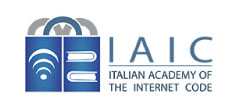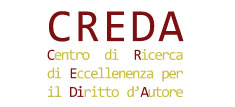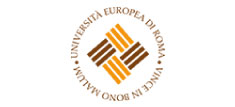La Commissione europea in data odierna ha apportato una modifica significativa al programma di lavoro…
Unintended consequences on competition of excessive Consumer Protection in Italian telecommunication value added services market
di E. Prosperetti e V. Visco Comandini
1. Introduction During the last ten years, in Italy, fraud and incorrect use of premium rate numbers in mobile and fixed telecommunication services have been a persistent problem for consumers. They were exposed to billing shock and non-transparent information in the presentation of premium-rate services on fixed and mobile numbering. Suppliers opportunism generated customers’ distrust, ending in a market for value added services smaller as it may be if these behaviours were punished. A very specific pro-consumer regulation was agreed in 1998, upon pressures on the Italian Government by the European Commission, giving the Ministry of Communications (now a branch of the Ministry of Economic Development) the power to monitor the use of premium numbering and establishing opt-in blocking measures similar to those contained in the future Universal Service Directive of 2002: the user requests the operator to block premium numbering. Such framework was updated in 2006, with new rules on fixed and mobile services and billing, with the so-called “Landolfi Decree” (145/2006) which confirmed the powers of the Ministry of Communications to establish consumer protection regulation for this kind of services and to monitor the operators providing the services, also applying sanctions. The following years were characterized by uncertainty in the regulation and governance, AGCOM and Antitrust intervened several times with new regulation which overlapped the powers of the Ministry, in particular by imposing a general call-barring for most premium rate numbers and by increasing billing transparency. In particular, an AGCOM decision of October 2008, replaced the opt-in model used so far with the opt-out call barring model, where operators implement a default option of call barring of most of premium rate service, numbers unless the user requests the operator to deactivate such feature. Consumer’s protection against fraud and abuse is a public measure toward a market failure. As any public policy it requires to be matched against the symmetric risk of government failure, which may arise if its practical implementation is not properly evaluated. The measure in question seems to be a good example of how a theoretically efficient measure, if unable to prevent only illegal and opportunistic behaviours while letting “virtuous” firms to freely operate the market, may eventually turn into a pure market restriction. The 2008 AGCOM decision, imposing a generalized numbering blocks (for contents requested from fixed lines) coped with a tight and unreasonable price cap restriction (for contents requested from mobile networks), severely affected the market for digital contents. Particularly detrimental seems to be the absence of selective blocking mechanisms, which has de facto increased the already unbalanced market power of fixed and mobile Telecom operators (hereinafter Electronic Communication Service Providers or ECSP) toward Content Service Providers (hereinafter CSP). Coase (1964) observed that the main goal of economists willing to use public policy measures dealing with market failures is to analyse how alternative arrangements actually work in practice. The concept has been framed by Williamson in the so called remediableness criterion. “[The criterion…] holds that an extant mode of organization for which no superior feasible alternative can be described and implemented with expected net gain is presumed to be efficient.”(1999: 316). We sustain that the existing regulation on consumer’s protection does not pass the remediableness criterion, because it restrains the supply of several CSPs on the market while not deterring opportunistic firms to adopt fraudulent strategies toward customers. This is not to say that opportunisms and fraud should not be punished and the market let alone, but that government actions if not correctly evaluated, particularly in multi stage markets where downstream telcos are able to restrict competition in upstream markets, may turn in an inferior solution, where both consumers and suppliers are worse off. This paper analyzes the effects of regulation adopted by the Regulator AGCOM in October 2008 for protecting consumers on the market for VAS on fixed and mobile networks in Italy that created a serious distortion to the market, unintentionally de facto enlarging the bargaining power of ECSPs. The second paragraph describes the main characteristics and regulations of this market, while the third investigate bargaining powers of the actors working in different stage of the VAS value chain. Paragraph 4 illustrates a list of feasible and effective measures specifically designed for fixing customer’s abuses, followed by usual concluding remarks. 2. Market definition The Italian product market for contents and value added services provided through telecommunication networks, whose value is estimated to be 600-650 million € (offportal mobile contents plus fixed line services) includes commercial directory services, information services (e.g. news, forecasts, service information), premium telephony services (prize draws associated with commercial brands, voting associated with TV shows, etc.), downloadable digital premium contents (ringtones, music and videogames), micropayment services (regulated by the new E-payment Directive) and E-books. Undertakings operating in the value added services market are regulated by the Ministerial Decree no. 145/2006 which defines them as Content Service Providers and provides them with detailed regulation. CSPs cannot be qualified, as ECSPs, under by Directive 2002/21/EC (Article 2, letter “c)” ), since they provide “content services” acting as “clients”. They appear as clients of ECSPs using their resources to support content and deliver products and services on the market. Instead, CSPs qualify as “information services providers” under Directive 98/34/EC and Directive 2000/31/EC ; furthermore, most of their services on fixed and mobile are services under Article 1, number 2) of Directive 98/34/CE. From the demand side, services and contents are provided on premium numbering (in Italy, 89x numbering for voice delivery and 4xxxx numbering for SMS delivery of the service). Customers may buy contents and services from either fixed and mobile networks. Excluding some few contents specifically designed for fixed (such as those which identify users by telephone number) or mobile (videogames and e-books), the relevant market, from the customers’ perspective, should be then considered the same. From the supply side, undertakings providing value added services may operate in either of the following two ways: i) if vertically integrated with ECSP, by directly providing a service on a numbering they have been entrusted with (as is the case with national communications operators who provide Value Added Services on their own networks); or ii) by providing, as CSP in a revenue sharing model, a service on numbering resources and infrastructure that enterprises lease through an agreement with ESCPs: one operator (SP – Serving Provider) will manage the numbering on the CSP’s behalf and serve as gateway, also for billing services on that number, to every other operator, AP – Access Provider, who will let users on its network access the numbering). An agreement between ECSPs in the value added service communications market on mobile networks mandates that an ECSP is to act as Serving Provider with a specific SP Agreement with the CSP, and mandatorily bill and collect revenues from final customers (i.e. the CSP may not bill the customer) paying out to the CSP a percentage of these revenues plus specific SP fees. Value Added Services are then provided on the networks of the various ECSPs by virtue of Access Provider (AP) agreements, which entail negotiations of technical protocols and fees, which vary for each AP. However, this scheme is not valid or enforceable on fixed networks where unbundling and tariff regulation would not allow it. On fixed networks, CSPs buy what may be regarded as a premium termination service for their calls on value added service numbering, which is also leased. Providers of fixed premium services, instead, tend to function in a business model where the CSP acquires traffic from the fixed ECSP and returns premium telecommunication services on fixed lines in a revenue sharing model. A service provided on mobile provides a reduced revenue sharing to the CSP, if compared to the same service on the fixed market. ECSPs bill and collect revenues from final customers and pay CSPs a percentage of these revenues minus a royalty for AP services if the ECSP is also Access Provider of the CSP. In both cases, CSPs provide content and ECSPs manage transport, routing, call management and billing (see Decree 145/2006, section 1, § 1, letter “f)”, Numbering Plan 26/08/CIR by AGCOM). If the CSP is not vertically integrated with the ECSP (e.g. is not owned/controlled by a Telco), it cannot qualify for directly providing the service, so revenue sharing becomes the only way to supply the market for value added services. Therefore, for the CSP the ECSP’s network becomes a genuine essential facility, the only technical way through which it can supply the market. 3. The bargaining power of the actors providing services along the VAS value chain As for any agreement between market players acting in different stages of the value chain, revenue sharing adopted by the VAS market tends to reflect the bargaining power of the parties (Fernandez and Kakani, 2006; AGCM-AGCOM, 2009). However, while ECSPs are usually large Telco companies with a significant market share and strong cash generating flow arising from their core business, CSPs are small firms instead often with week financial background. This allows ECSPs to adopt coordinated strategies toward CSPs, while the latter need to find case-by-case agreements. It is worth to note that the regulator plays a critical role in this game, because any regulation inevitably affects the bargaining power of the parties. While in the majority of Industrialized countries revenue sharing between CSPs and ECSPs is relatively fair and balanced, in China and Italy it is not. In Spain, France and the UK, the typical margin applied is 35% to ECSP and 65% to CSPs, while in Italy the ratio is switched: 65% goes to ECSP and only 35% to CSPs. In China the ratio used to be 40% – 60%, but ECSPs successfully reverted it to 90% – 10% (HoltKamp, 2006) . Usually, regulation on VAS services consists in imposing either a maximum margin to the communication network owner, a price cap on items bought by the final consumer or a block for certain numbering. In Italy such three measures are enforced altogether, strongly affecting market access and profit opportunities. However, each regulatory measure affects the business in different ways and directions. The first measure, part of the unbundling regulation, imposes a 10% maximum revenue share for ECSPs for fixed network only. Instead, mobile ECSPs are exempted because their market is considered competitive, not requiring any ex ante regulation such cap on access pricing . This asymmetric rule allowed CSPs to gain substantial profits from the fixed line, but dropped nearly to zero (or even a loss) their profits from mobile lines, therefore creating an implicit cross-subsidization. Cross-subsidies are necessary, since, from the consumers’ point of view, both fixed and mobile networks can indifferently reach the access to premium contents . The price cap imposed by The Italian National Numbering Plan (Decision 26/08/CIR of AGCOM as amended) on single premium contents provided through mobile network works in the opposite direction instead, squeezing margins to CSPs up to the point that several firms were obliged to leave the market . AGCOM has imposed, with Decision 600/09/CONS, general blocking measures of VAS numbers on all fixed lines. A customer should opt-in to receive VAS services to its fixed line operator; if he does not, VAS services will remain unavailable on the relevant fixed line. This caused a massive loss of turnover to CSPs, which had a substantial business in the fixed market. Customers found their lines unable to call the VAS numbers and shifted their attention elsewhere; some on mobile and some on other types of services. Instead, CSPs controlled by ECSPs were virtually untouched by this policy , because the numbers they use were excluded from the general barring . The overwhelming market power of ECSPs (AGCM-AGCOM, 2009), coped with the new regulatory measures seems to have worked as leverage effect, creating discriminatory behaviours between firms operating upstream to transmission and delivery to customers . Sometimes vertical integration is an effective tool for reducing productive and transaction costs (Williamson, 1975). However, VAS market seems to be a case where the main benefit for vertical integration of CSP is to enjoy the more favourable (and asymmetric) regulation for ECSPs. Evidences of this phenomenon are provided in Table 1, showing market values of VAS by distribution platform in Italy. Data for 2006 and 2007 come from the Report on Mobile Content & Internet published by University of Milan Politecnico, for mobile services, and from Assometel, for fixed services. Data for 2008 have been estimated by matching the same source with other market data to make them comparable with previous years. Off-portal premium services are those provided by independent CSPs, while onportal premium services are directly provided by ECSP through their own mobile portal. In 2008, the market for digital content exhibits a significant decrease with respect to previous year (-18,4%). The split of values by technological distribution facility shows that revenue decrease was not the same for all platforms: while services provided through fixed and mobile (off-portal) lines dropped by 50% and 28% respectively, services provided by on-portal increased by 6%. There are reasons to suppose that AGCOM’s new regulation played some role in this dramatic market value decrease that strongly affected non vertically integrated CSPs, while letting on-portal services nearly untouched. The combined effect of block numbering and price cap has de facto reduced the business of CSPs at the benefit of ECSPs, which were quick and efficient to lock the diverted customer’s demand into their portals . Data provided by the Politecnico confirm this hypothesis mechanism. After years of decreasing importance of the content distribution through their portals (on-portal services total revenues decreased between 2005 and 2007 from 57% to 47% with respect to off-portal services) ECSPs succeeded in reverting the path: in 2008 they regained 57% with respect to off-portal services. It is quite astonishing that AGCOM, upon a recognition of the effects of Decision 600/09/CONS, appreciated the general reduction of frauds after this decision without considering the significant negative effect on total market width. 4. Proposed measures We are reviewing a series of measures aimed at preserving consumer protection while allowing firms operating in both fixed and mobile markets to efficiently run their business. Measures include: (i) Higher standards to access the market. If AGCOM wants to hold incoming calls blocking measures, a white list may be created. This list, run by a technical group charged for its monitoring, may allow “virtuous” CSPs working in the market (never fined by AGCOM for illegal behaviour) to bypass the block. This measure does not preclude the right of the customer to selectively blocking in PIN mode its access to premium numbering, as defined by AGCOM in its 418/07/CONS decision; (ii) Adjustments to billing mechanisms. An obligation for CSPs to provide a significant financial guarantee for serving the market. Today CSPs do not need any license from Ministry or AGCOM to run their business. A sufficiently high guarantee may therefore work as effective incentive to not abuse customers for non-requested premium services. In case of legal controversies guarantees may work as a compensation fund. (iii) To abandon price caps on services. A further obligation for SPs to postpone payment at 120 days to USPs providing premium services. This rule would allow the customer to be fully aware of its true payment: if abuses or frauds were made by a CSP, a sufficiently large time window would facilitate him to block payments. (iv) Direct attribution of numbering to CSPs. This measure would allow CSPs to escape the framework agreement by which they are to leave billing to mobile operators and pay relevant fees. CSPs could interconnect their numbers with the mobile operators which provide a fair revenue sharing and are interested in distributing their content. In this regard, such a measure would also discourage fraudulent CSPs from sending poor or illegal content on their own numbering. Measures (i), (ii) and (iii) are designed to create a self-enforcing mechanism, whose aim is to inject trust in a market subject to opportunism and information asymmetry. They can be considered as a typical market safeguard, able to improve the wellbeing of both customers, CSPs and ECSPs. Measure (i) allows self-selection of “virtuous” CSPs willing to correctly serve the market, while screens out “bad” CSPs, whose improper behaviour was the very reason of the block. Measure (i) requires only to be enforced, because it is already included in regulation rules . Measures (ii) and (iii) only apparently increase the financial burden of firms. They work as effective incentive not to abuse customers, since financial guarantees and payment postponement prevent bad CSPs to adopt the hit and run strategy. 5. Concluding remarks The solution for avoiding poor regulation for Italian VAS lies in rebalancing consumer protection with a competitive market. Excessive consumer protection without considering effects on market structure and evolution hardly proved to be beneficial to the consumer and, ultimately, deprived the market of interesting content and brought poor services to the general public and no quality to consumers interested in this kind of product. On the other hand, companies with innovative products are prevented from distributing quality products and services on the market by regulations aimed at protecting consumers from harmful products, which horizontally cut the possibility to serve certain areas of the market without exceptions. The existing framework seems, in any case, to be hardly compatible with the general principles of EU Law, and raises some serious points about how consumer law and competition law should interact and be devised under a common umbrella. References AGCM – AGCOM (2009) “Indagine conoscitiva riguardante le condizioni di mercato e concorrenziali attuali e prospettiche dei servizi SMS (Short Message Service), MMS (Multimedia Messaging Service) e dei servizi dati in mobilità (SDM)”, Roma Coase, R. (1964) “The Regulated Industries: Discussion”, American Economic Review, 54, 194-197 European Commission (2010) “Progress Report on the Single European Electronic Communications Market 2009 (15th Report)”, Annex 1, “Implementation in the Member States”, Italy, staff working document SEC (2010) 630/1 Fernandez, J. and Kakani Ram K. (2006) “Understanding Dynamics in a Evolving Industry: Case of Mobile VAS in India”, XLRI School of Business and Humana Resources, XLRI Working Paper: 06-19, Jamshedpur, India Osservatorio Mobile Content & Internet (2009), “Niente è più come prima!”, Dipartimento di Ingegneria Gestionale, Politecnico di Milano, giugno Oliver E. Williamson: “Public and Private Bureaucracies: A Transaction Cost Economics Perspective,” Journal of Law, Economics, and Organization, 15 (1), March 1999, 306- 342 Williamson, Oliver E. 1975. Markets and Hierarchies: Analysis and Antitrust Implications. New York: Free Press.








